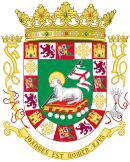This article needs additional citations for verification. (March 2019) |
| ||||||||||||||||||||
|
| ||||||||||||||||||||
Gubernatorial election | ||||||||||||||||||||
| Turnout | 81.57% | |||||||||||||||||||
|---|---|---|---|---|---|---|---|---|---|---|---|---|---|---|---|---|---|---|---|---|
| ||||||||||||||||||||
 Results by municipality Acevedo Vilá: 40-50% 50-60% Rosselló: 40–50% 50–60% 60-70% | ||||||||||||||||||||
| ||||||||||||||||||||
Resident Commissioner election | ||||||||||||||||||||
| ||||||||||||||||||||
 Results by municipality Fortuño: 40-50% 50-60% 60-70% Prats: 40–50% 50–60% | ||||||||||||||||||||
 |
|---|
General elections were held in Puerto Rico on Tuesday, November 2, 2004. After a count by the State Commission of Elections, the winner was inaugurated to a four-year term as Governor of Puerto Rico on January 2, 2005.
The post of Governor of Puerto Rico and the entire House of Representatives and the entire Senate, as well as the Mayors of the municipalities of Puerto Rico, and the Resident Commissioner were also elected for four-year terms.
For the first time in Puerto Rican history, citizens unable to mobilize to voting colleges for medical reasons, but capable of practicing their right to vote, were visited in their own homes and hospitals so that they could exercise their vote.



